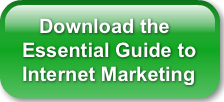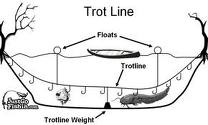My daddy used to tell me to “plan your work and then work your plan.” In the ever-changing and face paced world of online marketing, that can be easier said than done. Often, it happens that a business decides to start building an online presence and then ends up with bits and pieces that don’t really fit together.
Bits and Pieces
Here is how that usually happens: A business owner creates a Facebook page (or perhaps not knowing any better, a Facebook profile) for their business. They start posting a few things and getting “likes” for their page. Now, they hear that Pinterest is the hot spot, soooo, they head on over and create a Pinterest profile and start pinning. Of course, you can’t get found online without including Google, so off they go to create a Google+ account. Now Google wants them to claim their place page and they are asking for a web address. Okay, now they have to bite the bullet and get a website (if they don’t already have one). Someone tells them (accurately) that a blog is good for search engine optimization. Oh, and what about pay-per-click? . . . this could go on and on forever.
Pull it together
If something like the above scenario is how things have happened for your business, it is time to stop and assess what you have and pull it all together in one overall plan. A good approach is to create a hub for your online presence and then build from there. The logical place to start building is with your website. It is really the only online property you own and who knows what the next hot social media site will be or how Facebook or Google are going to change their algorithms next. Think about:
- Who is your target market - who are you trying to reach?
- Where does your target market hang out? Are they on Facebook, Twitter or are they searching on Google for your products and services?
- Be where they are looking and link your accounts together to ultimately draw people back to your website.
- Create calls to action that will help your visitors convert into leads for your business.
- Have a plan for following up on the leads you have generated.
If you have bits and pieces out there that aren’t really tied together, the process of pulling it all together may take a bit of time and certainly some effort but it will pay off in the end with leads for your business.
Need help pulling it all together? Give us a call 504-491-0001.
{ 0 comments }
 Today, I would like to introduce you to our strategic partner for copywriting, Annie Bleecker. Annie is a copywriter and content strategist who specializes in helping businesses deliver key messages in a way that resonates with their target audiences. She has been writing and editing professionally for seven years, both in print and online mediums. Her passion is B2B web copywriting, and she particularly excels at explaining complicated processes in clear, compelling language.
Today, I would like to introduce you to our strategic partner for copywriting, Annie Bleecker. Annie is a copywriter and content strategist who specializes in helping businesses deliver key messages in a way that resonates with their target audiences. She has been writing and editing professionally for seven years, both in print and online mediums. Her passion is B2B web copywriting, and she particularly excels at explaining complicated processes in clear, compelling language. At Wharton Marketing, we have been busy, recently, building strategic partnerships and growing our team. While we used to focus mainly on website design with other marketing services added, we are now moving our focus to a more comprehensive inbound marketing approach.
At Wharton Marketing, we have been busy, recently, building strategic partnerships and growing our team. While we used to focus mainly on website design with other marketing services added, we are now moving our focus to a more comprehensive inbound marketing approach.
 “We have a website but we aren’t really getting any customers through our online channels.” This is something we hear all the time from business owners who are frustrated that they are not getting leads and customers from all of the time, money and effort that they put into their online presence.
“We have a website but we aren’t really getting any customers through our online channels.” This is something we hear all the time from business owners who are frustrated that they are not getting leads and customers from all of the time, money and effort that they put into their online presence. A few days ago, Joe B. wrote an article about
A few days ago, Joe B. wrote an article about  Well, you have to look at your website like a trotline in fishing. Every page on your website, or post on your blog, is a hook on a trotline. And every one of those pages (hooks) has different bait (keywords). So every one of your blog posts gives you a new opportunity to be found in the results of a search in a search engine. The more blog posts, the more opportunities.
Well, you have to look at your website like a trotline in fishing. Every page on your website, or post on your blog, is a hook on a trotline. And every one of those pages (hooks) has different bait (keywords). So every one of your blog posts gives you a new opportunity to be found in the results of a search in a search engine. The more blog posts, the more opportunities.
 So, why aren’t you blogging? For many businesses, the bottom line is fear. Fear of not having enough time, ideas, and/or skills. Blogging is actually like anything else, the more you do it, the better you get at it. However, you may need a little help in getting started.
So, why aren’t you blogging? For many businesses, the bottom line is fear. Fear of not having enough time, ideas, and/or skills. Blogging is actually like anything else, the more you do it, the better you get at it. However, you may need a little help in getting started.